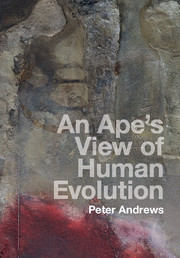Preface
Published online by Cambridge University Press: 05 January 2016
Summary
It is common knowledge that our human ancestors descended from apes. It is also commonly thought that in the course of this transition, some ape men left the forests, in which their ancestors were living, and entered a life in the African savanna. In the course of this transition, so the story goes, our ancestors started walking upright on two legs, started making tools, and gradually became what we are today. I will be examining the evidence for these assertions, and in particular I will be looking at the evidence for what our ancestors were like and where we came from. In doing so I will try and dispel some of the confusion many people are in because of the long history and great variety of fossil apes, the group from which we arose. In particular, I will be looking at the evidence for our last common ancestor with the apes to try and discover when and where we came from. This will entail over 20 million years of human evolution dating back to the time when apes first appeared in the fossil record.
Many recent surveys of early human evolution take chimpanzees as a model for our ape ancestry. Living apes, and particularly chimpanzees, which are our closest living relatives, are one of the major sources of information about our last common ancestor, in particular identifying characters and behaviour shared in common, and these have been described in some detail in Chapters 2 and 16 based in part on work by Bill McGrew. It would be a mistake, however, to imagine that the last common ancestor looked anything like a chimpanzee, for it, like humans, has evolved from this ancestor by ‘descent with modification’ in the words of Charles Darwin. It was no surprise that when fossil remains of Australopithecus anamensis were found a few years ago, this 4 million-year-old human ancestor looked nothing like chimpanzees; however, it had similarities in its jaws and teeth to the Miocene apes that I was studying at the time. Since it also had human attributes such as adaptations for bipedalism, which is a uniquely human trait, it was completely different from the chimpanzee-like common ancestor that was (and still is for some people) the accepted interpretation of the human/ape common ancestor.
- Type
- Chapter
- Information
- An Ape's View of Human Evolution , pp. ix - xviPublisher: Cambridge University PressPrint publication year: 2016



